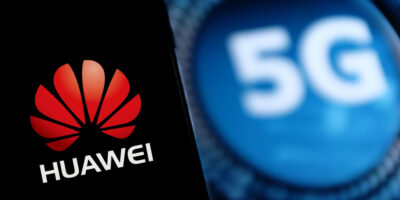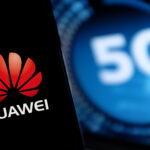
More people are buying used smartphones with half a billion shipments expected in three years.(Photo by Kirill KUDRYAVTSEV / AFP)
Used smartphones are outselling new models, with half a billion shipments expected in three years
- Worldwide shipments of used smartphones, including officially refurbished and used smartphones, are estimated to reach 413.3 million units by 2026.
- IDC believes trade-in programs are the driving factor for the global new and used smartphone market.
In today’s day and age, a smartphone is more of a necessity than a luxury — but for billions of people worldwide, buying new is too expensive. The market for used smartphones has been rising gradually over the years, despite the global smartphone market diving last year.
The global smartphone market (for new handsets) had been flourishing in the last few years, but when the economic situation worsened last year, people slowed their purchases. Demand plummeted, leading to the largest-ever quarterly decline in the worldwide smartphone shipment between October and December last year.
International Data Corporation (IDC) report estimated that worldwide shipments of used smartphones, including officially refurbished and used smartphones, reached 282.6 million units in 2022. The amount reflects an 11.5% increase over the 253.4 million units shipped in 2021. In contrast, 2022 ended with shipments of 1.21 billion units of new smartphones, a steep 11.3% decline for the year.
In fact, IDC reports that the drop in sales for new smartphones marks the largest-ever decline in a single quarter. The shipments of 1.21 billion units represent the lowest annual total since 2013 due to significantly dampened consumer demand, inflation, and economic uncertainties.
IDC’s Worldwide Quarterly Mobile Phone Tracker research manager Anthony Scarsella noted that the used market was able to grow 11.5% in 2022 thanks to the 6.1% rebound we witnessed in the new market for 2021. “Used devices demonstrate more resilience to market inhibitors than new smartphone sales as consumer appetite remains elevated in many regions,” he added.
Scarsella also noted that attractive price points are critical for growth as cost savings remain the primary benefit. “However, a high-end inventory struggle due to elongated refresh cycles in the new market has used prices growing over 11% in 2022.” For brand-new smartphones, IDC’s report shows that it represented the lowest annual shipment total since 2013 due to significantly dampened consumer demand, inflation, and economic uncertainties.
The low shipment factors could well be why used, and refurbished smartphones have seen an uptick in sales and shipments. According to IDC’s taxonomy, a refurbished smartphone is a device used and disposed of at a collection point by its owner. Once the device has been examined and classified as suitable for refurbishment, it is sent off to a facility for reconditioning and is eventually sold via a secondary market channel. A refurbished smartphone is not a “hand-me-down” or gained due to a person-to-person sale or trade.
The era of used smartphones is upon us
IDC expects the growth to continue as the firm forecasts 413.3 million units of used smartphones to be shipped in 2026, with a compound annual growth rate (CAGR) of 10.3% from 2021 to 2026. IDC reckons that trade-in programs continue to be the driving factor for the global new and used smartphone market.
“We have witnessed new programs launch successfully across multiple regional markets where trade-in is still a new concept for local consumers. Additionally, in mature markets such as the US, Canada, and Western Europe, trade-in continues to play a significant role in speeding up refresh cycles through telco and retail-driven promotions. This has contributed to an increase in trade-in value (TIV), typical when demand for new devices is slow,” the report stated.
Essentially, the rise in TIV has pushed prices up in the secondary market due to consumers getting more for their old devices to help drive upgrades. To top it off, IDC believes that the increased sale of higher-priced devices in the new market has created a circular effect, as many of these aggressive trade-in deals feature primarily on premium devices.
“How long these aggressive trade-in offers last remains a big question for buyers and sellers. Eventually, narrow margins will impact the overall profits of the channel, vendor, or perhaps both,” IDC added.
READ MORE
- The criticality of endpoint management in cybersecurity and operations
- Ethical AI: The renewed importance of safeguarding data and customer privacy in Generative AI applications
- How Japan balances AI-driven opportunities with cybersecurity needs
- Deploying SASE: Benchmarking your approach
- Insurance everywhere all at once: the digital transformation of the APAC insurance industry


